L.E. Carmichael's Blog, page 7
October 2, 2023
The Coolest Habitat On the Planet
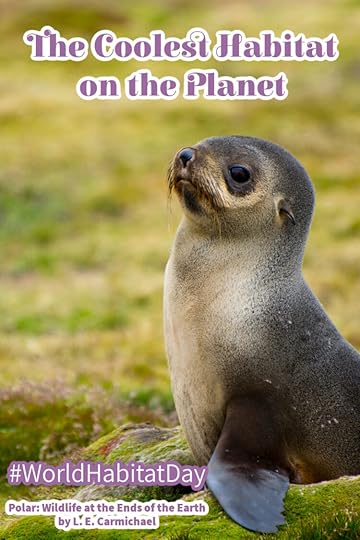 It’s World Habitat Day! And what better habitat to celebrate than Antarctica – a place like nowhere else on Earth.
It’s World Habitat Day! And what better habitat to celebrate than Antarctica – a place like nowhere else on Earth.
One reason Antarctica is so unique is because it’s been isolated from the rest of the planet for about 20 million years: ever since the Antarctic Circumpolar Current formed. The ACC – you guessed it – is an ocean current that circles the continent of Antarctica, separating the cold waters of the Southern Ocean from the warmer waters further north. Air temperatures and weather patterns also shift at this front. Sea ice doesn’t form north of the current; icebergs, albatrosses, and Antarctic penguin species only occur south of there.
The ACC and Antarctica’s high elevation combine to make it the coldest place on the planet – Earth’s record lowest temperature was recorded in Antarctica. It was -89C, if you’re curious. At -50C, exposed human skin freezes in less than 2 minutes. I’ve experienced -50C, and I can’t even imagine how much colder -89C would feel!
Another thing that makes Antarctica unique? There are no terrestrial predators! There are predatory birds and predatory seals and whales, but no wolves or bears or weasels. Some scientists believe this may be one reason penguins lost the ability to fly – without land-based predators to escape from, they no longer needed to take to the skies. Protection from predation also means penguins* (and other birds) can nest on flat land, instead of clinging to cliffs the way puffins and other seabirds do in the Arctic.
Speaking of the land, did you know that less than 0.5% of the continent of Antarctica is exposed rock? That rock is found along the coastlines (in summer) and on nunataks – the tippy-tops of mountains that stick up above the ice sheets. Seabirds like petrels nest on inland nunataks, sometimes hundreds of miles from their food sources in the oceans. There’s evidence that some of the colonies have been used for millennia: if you want to know more, book me for an author visit! That gross-but-cool evidence is a crowd-pleasing highlight of my (Ant)Arctic Adaptations program.
And there are only two flowering plant species in all of Antarctica: hair grass and antarctic pearlwort. The only other green things are moss, lichen, and the algae that grows in the guano-rich runoff from penguin colonies!
How Can We Protect This Unique Place?Any habitat that’s formed in isolation is particularly vulnerable to change. We all know how climate change is impacting Antarctica, but that’s not the only threat this delicate place is facing.
Humans have only been in Antarctica for about 100 years, but despite our best efforts, we’ve already altered the ecosystems. On the sub-Antarctic islands (where many penguin and seal species reproduce), introduced animals like rodents, livestock, and pets have had major impacts. Introduced insects have been found in the Antarctic Peninsula, and introduced plant species have the potential to spread south as climate change continues. There’s no way of knowing which species – whether introduced intentionally or accidentally – will become invasive, especially as Antarctica becomes a popular destination for adventurous tourists.
The good news is that Antarctica is protected by some of the strongest conservation measures anywhere in the world. But there’s still more we can do to help. One way is by continuing our efforts to reduce our carbon footprints – a thing that helps ALL the habitats on Earth. Another way is by learning more about the issues Antarctica faces, and if we are able, donating to organizations that are working to protect this precious, delicate place.
Here are some great places to start:
World Wildlife Fund: The Antarctic
Greenpeace: Protect the Antarctic
Antarctic and Southern Ocean Coalition
Calling all educators! I’m presenting at the North American Association for Environmental Education conference later this month, with fellow children’s science author Rochelle Strauss. The event is virtual, registration is open, and we’d love to see you there!
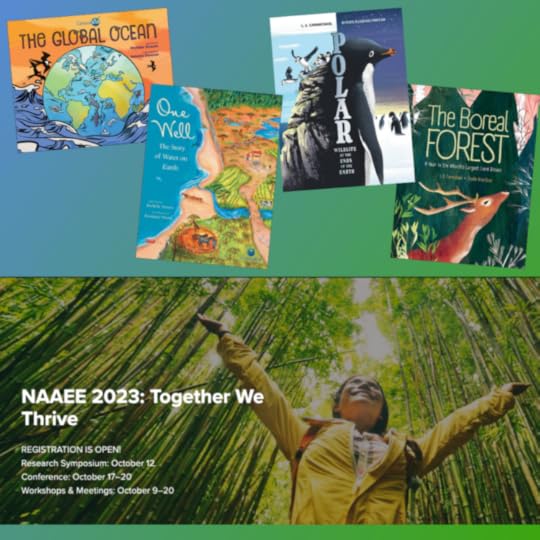
*Side note about penguins. Did you know they are the first aquatic dinosaurs? It’s true! Penguins are dinosaurs because they (and all other birds) evolved from ancestors that were dinosaurs. And they are the first aquatic dinosaurs because marine reptiles like mosasaurs and ichthyosaurs and long-necks plesiosaurs are not, in fact, dinosaurs – they are a separate branch of the reptile family tree.
September 29, 2023
Mahtab Narsimhan: The Boy and the Banyan Tree – A Story About Gratitude and Giving Back
 Welcome to Cantastic Authorpalooza, featuring posts by and about great Canadian children’s book creators! Today’s guest:
Mahtab Narsimhan
. Take it away, Mahtab!
Welcome to Cantastic Authorpalooza, featuring posts by and about great Canadian children’s book creators! Today’s guest:
Mahtab Narsimhan
. Take it away, Mahtab!
Who is the tree in your life?
And whom will you be a tree to?
There are many people in our lives, family, friends, teachers, and mentors, who nurture us and make us who we are today. How often do we remember them, or thank them? This was the inspiration for the story of a boy who comes back to look after the tree who gave him the best gifts in life: wisdom and independence. The tree being a metaphor for someone who made you, you.
The pandemic brought a lot of sorrow, but it also forced us to slow down and reach out to our loved ones to show that we appreciate them, and we care. It reminded us to spend time with them and make them a part of our busy lives again.
In The Boy and the Banyan Tree, a curious young boy loves spending time with a wise old banyan in his village. Whenever he wants something, she shows him how to earn it: a better strategy than giving it to him. As he matures, the wisdom the tree imbues in him, helps him navigate life surrounded by friends instead of strangers. Eventually, the boy returns to his community and to the banyan tree, completing the circle of friendship, of caring, and paying it back.
While reading this story, I hope kids will appreciate the nurturers in their lives, now. And parents will be inspired to reach out to those who shaped them and give back in some way. This story might also inspire the younger generation to be a “tree” to a sibling or a friend, ensuring that the circle of life, love, and caring, will go on.
This book is published by Scholastic Canada and illustrated by Dharmali Patel. You can pre-order a copy at your favourite bookstore for yourself, or for a child in your family.
This Discussion Guide with relevant curriculum ties will help teachers bring this story to their classrooms and will spark interesting discussions with their students.
For more information about Mahtab Narsimhan, please visit her website https://mahtabnarsimhan.com/ and connect with her on Twitter/X @MahtabNarsimhan.

September 23, 2023
Tipping Towards Fall: The Autumnal Equinox
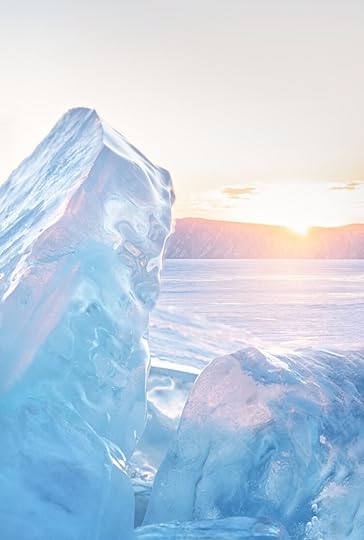
Science Literacy Week is almost over – almost, but not quite! There’s still time to get some free science-y goodness in your life, so hop on over to the Science Literacy Week website to learn about last-minute events happening near you.
For those of us in the Northern Hemisphere, today marks another ending… it’s the autumnal equinox, which means summer is officially over. That doesn’t mean a whole lot for me, weather-wise – this is southern Ontario, and my rose bushes will be blooming into November. But today is a day of transition, all the same – the tipping point, the liminal space between the freedom and expansion of summer and the hermitting I inevitably resort to as the cold and darkness of winter settle into my bones.
But whether today marks an ending or a beginning is really a matter of perspective. Or, more precisely, geography. After all, today is also the day that the sun rises at the South Pole for the first time since March: it’s the first day of spring. Which means that, if you’re a penguin, things are starting to look up. In fact, Adélie penguins are celebrating the turning of the seasons – as I type this, males have returned to their breeding colonies and are busy building nests in hopes of enticing females.
They build them out of stones. Which I personally would not enjoy sitting on for several weeks, but hey – at least it keeps your egg (and your tailfeathers) out of the icy spring meltwater!
How do you celebrate the shifting seasons? Are you a “Hooray for pumpkin spice!” person or a “Dear God, where did I put my sweater?” person? I’d love to hear your stories.
Want to know more about the Antarctic equinox? Polar: Wildlife at the Ends of the Earth is available at bookstores and libraries near you.
Teacher friends! Celebrate the season by booking an author visit. I’ve got STEM programs and writing programs for kids and adults alike: contact me to learn more.
September 18, 2023
Happy Science Literacy Week! And Also, What IS Science, Anyway?
It’s the most, wonderful tiiiiiime of the year – at least, if you’re a science person! It’s Science Literacy Week!
If you’re not familiar, Science Literacy Week is an annual, national celebration of all things science. Universities, libraries, and other organizations all across Canada are offering FREE STEM EVENTS for all ages. Hop on over to the Science Literacy Week website to find out what’s happening near you.
Are you back? Excellent, because I’m about to do my part for the cause and talk a little bit about what science is.
Picture it: Edmonton, 2004.*
We were nearing the end of my PhD candidacy exam, a gruelling, three-hour trial-by-fire in which innocent young graduate students are locked in a room with four to six experienced professional scientists who are rapid-firing questions and awaiting oral answers. They don’t tell you what topics will be covered in advance, making preparation both frantic and almost impossible. And I suspect that the goal of the event is less about testing your qualifications and more about to see how long you can go before nerves and exhaustion cause you to resort to answering “I have no idea” over and over again.
I had pretty much reached that point when Ian Stirling, venerable father of polar bear research in Canada, asked me if I thought it was a problem that my research methods didn’t follow the scientific method.
If it’s been a while and you need a refresher, the scientific method consists of these basic steps:
observe – get some dataexplain – come up with a hypothesis that explains your observationsexperiment – to test your hypothesisshare your results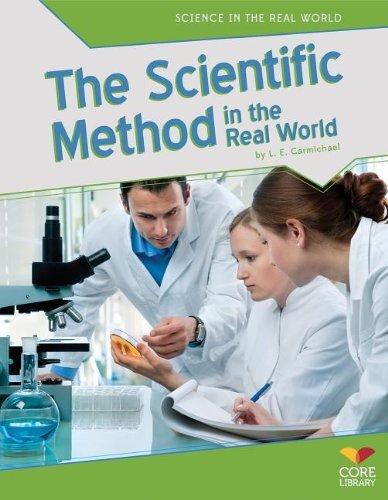 I wrote a whole book about these steps, but that was later. Back to our story:
I wrote a whole book about these steps, but that was later. Back to our story:
Out of reflex, I started to give the answer I thought Ian was expecting: “Well, obviously it’s better if when it does–”
Ian pounced. “Is it?” he asked, a gleam in his eye.
I had nothing, so I stared at him.
“Someone once told me,” he said, “that science is the description of the natural world. That’s it.”
I sat back in my chair, mind blown.
Because that’s all science is: a way of describing and understanding the world around us. Sometimes those descriptions can be tested with experiments, and sometimes they can’t: sometimes, they can only be tested by paying very close attention to the world, and trusting that, if you do so long enough, patterns will reveal themselves.
That’s how I ultimately earned my PhD – by gathering a gigantic mountain of data about wolves and arctic foxes and staring at it until the patterns became clear. That worked for Darwin, too.
This Science Literacy Week, I invite you to gather your own data in search of truth. Do an experiment, if that’s the type of science you love. If it’s not?
Go outside.
Pay attention.
Get curious.
Wonder.
Don’t forget to come back and share what you learn.
*Bear with me, I’ve been streaming a lot of Golden Girls. #SophiaForever
September 8, 2023
Amanda West Lewis: Historical Fiction as Time Traveling
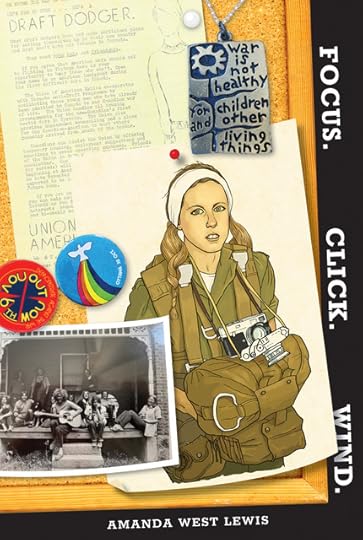 Welcome to Cantastic Authorpalooza, featuring posts by and about great Canadian children’s book creators! Today’s guest:
Amanda West Lewis
. Take it away, Amanda!
Welcome to Cantastic Authorpalooza, featuring posts by and about great Canadian children’s book creators! Today’s guest:
Amanda West Lewis
. Take it away, Amanda!
People who write historical fiction generally love research. We have a reverence for minutiae and often find ourselves spending many hours reading about things that have nothing whatsoever to do with our stories. We love the hunt and the serendipity –– those moments when something unexpected pops up that you had no idea existed, but which is the perfect thing for your characters to discover.
You might think that writing about a time period in which you have lived wouldn’t have the same thrill. But having written two historical novels that take place before I was born, and two that are set during my lifetime, I have to say the discoveries I made about my own historical epoch have been equally surprising. In fact, they’ve given me new ways of understanding my own life.
Focus. Click. Wind is an historical novel that takes place in 1968. The book is semi-autobiographical, and although the main character, Billie, is older than I was in 1968, there are characters, places and events that come from parts of my life. As with all historical fiction, the book was meticulously researched, and I spent many days fumbling about in dark rabbit holes. It was exciting to dig into those years, to study the context of my childhood and to begin to see things from a broader perspective. I had thought I knew and understood those days, but my vision was incredibly limited.
I realized that the same needed to be true of Billie. She can no more understand the world that she is living in than I could in those tumultuous years. She can’t see the wider picture, but as her author I needed to know everything I could about her world. As the canvas of my setting began to take shape, I worked to paint the brush strokes in such a way that the reader could see this larger picture that Billie herself knew nothing about. Just as we do with our own lives, Billie sees what is immediate, and what is immediately important to her. But there is so much she misses.
I wrote the story in close third person present tense, getting as tight a focus into Billie’s mind as possible. I couldn’t write it in first person (as I had with the prequel These Are Not the Words), because I needed a little space for omniscience and for a narrative presence to help the reader sort through things that Billie couldn’t see,
The unexpected personal result was that I could see, perhaps for the first time, my own teenage self in the context of her time. The more colour I put into my painting of the setting, the more Billie and I became real and immediate to me. With each detail, I could see both of us as the results of our time and our personal biography. Billie is not me, but there is enough of me in her and enough of her in me that my own memories are starting to blur. Our histories have begun to meld. A past life is, to a certain degree, fictional and I realized that my teenage life doesn’t more exist any more than Billie’s does. And because in fiction we create an arc and a resolution, I have found myself putting my own memories into an arc and giving my teenage self a resolution that I never felt at the time.
It is a delicious feeling, like going into a time machine and nudging my young self in a direction, onto a path. As in a time-travel book, the ripples of Billie’s youthful movements are travelling forward through the decades and gently adjusting Amanda’s much older self. Billie is working on Amanda, helping me forgive the hot mess of my own teenage years.
Richard Wagmese says, “Stories are meant to heal.” I don’t know if he necessarily meant it as applicable to personal narrative, but it has become true for me. More importantly, I hope it will be true for my readers. Perhaps by writing myself into Focus. Click. Wind, my younger readers can come to a bit of forgiveness of themselves. May they not have to wait for as many decades as I have in order to see themselves in a broader context! Although I suspect that they, too, will need distance and many rabbit holes before they can build their own personal time-machine and construct their own narrative arc.
September 1, 2023
Lea Beddia: Struggle, Resilience, and Difficult Choices
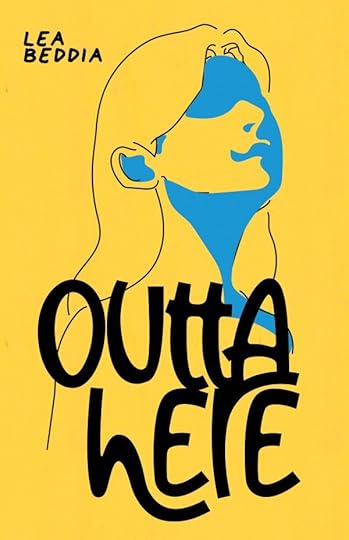 Welcome to Cantastic Authorpalooza, featuring posts by and about great Canadian children’s book creators! Today’s guest: Lea Beddia
. Take it away, Lea!
Welcome to Cantastic Authorpalooza, featuring posts by and about great Canadian children’s book creators! Today’s guest: Lea Beddia
. Take it away, Lea!
What are the first words you think of when you read Teenagers are…?
Did the words resourceful, hard-working, or resilient come to mind? We’ve all heard negative stereotypes about how today’s generation have it so easy, but we overlook the many young people living in a constant struggle against poverty. These kids are full-time problem-solvers. Today’s teens are resilient and sensitive, but they are wrongfully taught that sensitivity is a weakness.
This is why I wrote Outta Here (James Lorimer & Company, September 2023). Élise, the main character lives with her mom, Claire, who has succumbed to opioid addiction. Claire’s illness has left Élise with a multitude of responsibilities and one tough choice. Should she stay home after high school to care for Mom, or leave for the city to attend the college of her dreams? Her choice is a burden, outweighed only by her decision of whether or not to open up to her best friend about her mom’s addiction and financial troubles. She does not want to appear weak, but Élise must pick between what’s best for her mom or for herself. Many young people face such choices, but feel unequipped to handle them.
For many families living in socio-economically disadvantaged areas, young adults have stepped up to hold the fort. When the pandemic hit and students in Quebec attended school online, many of them shut off their screens and found jobs in pharmacies, grocery stores and gas stations. They woke up early, put on uniforms and helped support their families. My idea for Outta Here was sprung as my frustration hit an all-time high during the pandemic when the education minister at the time sent a wave of mixed messages to young people. At first, online learning was more about checking in with teachers and classmates. Students who did not have the bandwidth to be on Zoom got jobs instead. Then, the minister made an announcement stating a student’s job was to learn, not work. Even in the most ineffective learning conditions, while their parents struggled to make ends meet and workers were leaving their jobs because they’d contacted the virus or were afraid to, students were expected to sit in front of screen all day. I was angry because our young people were taking on huge responsibilities. They were the ones who served us at the check-out of the grocery store and they stocked the shelves after the toilet paper ran out.
I have been teaching high school for nearly twenty years, and from my standpoint, not much teaching was going on at this time. I was home with my own three young children, teaching to a handful of students who did not turn on their cameras or microphones for our ‘classes’. I told my students, “Get outside. Help your adults.” And they did.
The day after the minister’s announcement, I asked a colleague who runs our school’s Facebook page to create a post thanking our students and their parents who were essential workers. Their resourcefulness and resilience inspired Élise. Although I chose not to set the story during the pandemic, I think the urgency of her needs reflect the times. Like Élise, many young people are taking care of themselves. More importantly, they are learning to ask for help when it all gets too much.
We are working hard to normalize asking for help, to remove the stigma of mental health and poverty. I hope Élise can help young people do that. I also hope she can help readers understand how everyone struggles in some way. Élise is also having a hard time keeping her grades up. College is a possibility, but she has to graduate first and she is already repeating some courses. She’s interested in school, but reading is tough for her. So many teens struggle with reading. They may say they don’t like it, but truly, they find it overwhelming. Their immediate needs are to be safe, fed and loved. They don’t always have all three needs fulfilled. Sometimes, they don’t even have one fulfilled, so reading is not at the top of their list. With that in mind, Outta Here and my first novel, Take Off! (Rebel Mountain Press, 2023) are written for striving readers. Books for this readership offer a linear storyline with few characters. They are ideal for learners with language difficulties, second language learners or anyone who likes a quick read without forfeiting the drama and impact of a great YA novel.
Outta Here is available as of today (September 1st) from Lorimer Children and Teens at https://lorimer.ca/childrens/
To find out more about Lea and her books, or to schedule a school visit, head to www.leabeddia.com.
August 18, 2023
Frieda Wishinsky: How a Zinnia Sparked a Book
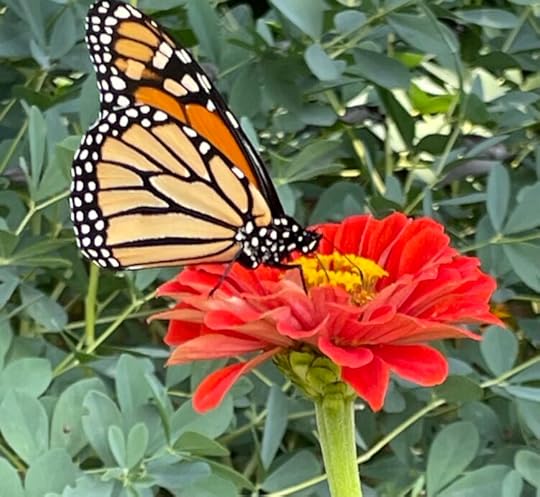 Welcome to Cantastic Authorpalooza, featuring posts by and about great Canadian children’s book creators! Today’s guest:
Frieda Wishinsky
. Take it away, Frieda!
Welcome to Cantastic Authorpalooza, featuring posts by and about great Canadian children’s book creators! Today’s guest:
Frieda Wishinsky
. Take it away, Frieda!
I’ve always been fascinated by the story behind a book. What sparks an idea or theme?
My latest picture book, A Flower is a Friend with luminous art by Karen Patkau, published by Pajama Press, began with a packet of zinnia seeds.
I‘d long admired the multilayered, rich colors of zinnias so I thought why not grow some from seeds? I bought a packet for under $2.00 and carefully dug the seeds of this annual into my perennial garden. Then I waited.
To my delight after about a month, the zinnias grew tall and beautiful. Their bright flowers not only attracted me, but butterflies and bees.
One day as I photographed a monarch flitting back and forth between two zinnias, I noticed that it seemed especially drawn to a bright red zinnia. It landed on the flower and drank the nectar and pollen so deeply and so long (for a monarch) that I was able to get closer and closer and take photo after photo.
I liked the pictures I took that morning and thought I could do something with them. Maybe cards? A poster? Prints? I shared my thoughts with my illustrator/writer friend Karen Patkau and as I did, I realized that some of those options would be expensive. What about writing a picture book instead? I asked Karen that if I did, would she be interested in doing the art? (It’s unconventional to create a picture book with an illustrator, especially a friend, but sometimes you try the unconventional.) Karen agreed.
Now all I had to do was figure out how to take a garden moment and turn it into a book. I looked at my photos again and the answer was there. Like many flowers and the creatures who love them, my zinnia and the monarch were interacting, almost kissing. So what about a book about the connection between flowers and creatures? Kids often think of flowers as static. Why not show how alive and interactive flowers are especially when they meet a friendly creature? And why not write a book about the symbiotic connection that is so vital to pollination?
I decided to start the “story” in the morning when flowers like morning glories open and reach for the sun. I’d follow with other flowers and creatures throughout the day and end at night as a crocus closed its petals.
I wrote a short, lyrical text, Karen created three beautiful samples and off our submission went. We were excited when Pajama Press said they’d like to publish our book.
After working with their excellent editor, I added STEM content to extend the reach of the text to a variety of kids (and adults). Each page would now have a question for readers to think about. The short, clear answers would be in the back. Karen added a two-page spread at of a glorious garden with all the creatures and flowers in glowing color and movement.
I love the finished book–a cross between a picture book for young kids, information for older kids and adults and a coffee table book for anyone at any age.
To our delight the reviews have been stellar and even starry, including a star from Kirkus.
When I think about it, though, the best part of writing A Flower is a Friend, maybe the best part of writing any book, is the process. It’s satisfying to grow an idea into a concept or story and watch it bloom into a beautiful book.
August 3, 2023
Bird Sightings and Chipmunk Gardens

Mr. Peanut is a better gardener than I am…
About 5 years ago, Tech Support and I moved to Ontario. We live in a relatively new neighbourhood, and the first year, there were lawns but no trees. The second year, scattered shrubs and the occasional sapling. Now, almost every house on the block has a garden and at least one tree, and it’s been such a thrill to watch wildlife moving in as more and more habitat takes root.
This year, the first house finches visited our bird feeders. And this morning, we spotted the first hummingbird of the summer drinking from our honeysuckle vines – vines we innocently supposed to be annuals, but which have come back bigger and better every spring, despite the vigorous pruning we give them.
We also get visits from at least one eastern cottontail. We named her Dog – Destroyer of Gardens – after she chewed every single flower off our creeping phlox plants. We’re philosophical about that loss though, as DOG had babies in our yard, and few things are cuter than fresh baby bunnies.*
The most frequent mammal sightings, though, are of chipmunks! At least two of them visit the yard, both of whom are named Mr. Peanut, because:
Our neighbour feeds them peanutsWe can’t tell them apart, much less discern their gendersMr. Peanut loves to eat peanuts on our deck. As the owner of a nut allergy, I am trying not to interpret this as a plot to murder me, and have placed Tech Support in charge of cleaning up the shells. He made the mistake of leaving his gardening shoes outside one night, only to discover Mr. Peanut had stashed a whole nut in one for later use!
Mr. Peanut is very, very good a stashing food for later use. He’s great at cleaning up the seeds that grackles and red-winged blackbirds have spilled under the feeders. He’s also great at planting those seeds ALL OVER THE YARD. We were baffled by the odd weeds we kept finding in the strangest of places, until we realized that Mr. Peanut’s hordes were sprouting! He was baffled in turn by the fact that all his seeds were missing, after I went around uprooting all the sprouts.
Small price to pay for the fun of watching wildlife in our own backyard.
What birds and bugs and mammals visit your yard? I’d love to hear your stories!
Attention Writer Peeps! I’m presenting at the SCBWI virtual conference this weekend. Registration will get you recordings of ALL 50 sessions, so check it out.
*One of those baby bunnies is now buried under our foxgloves. We heard the strangest noise one morning, and when we went out to investigate, we discovered Baby Dog, screaming in terror as she fled from the neighbour’s cat. We spent three days running outside to intervene in the hunt… only to find her carcass in the garden one morning. You know me – I LOVE cats. But they are highly effective predators and the number one cause of death for wild birds in the USA. Keep your cat indoors – for its sake, and the sake of every small wild creature in town.
July 21, 2023
Karen Krossing: Addressing the Monster in the Closet
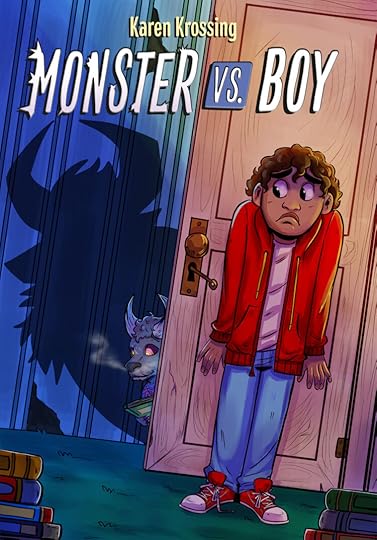 Welcome to Cantastic Authorpalooza, featuring posts by and about great Canadian children’s book creators! Today’s guest:
Karen Krossing
. Take it away, Karen!
Welcome to Cantastic Authorpalooza, featuring posts by and about great Canadian children’s book creators! Today’s guest:
Karen Krossing
. Take it away, Karen!
I’ve loved playing with words and making up stories ever since I was a child. Back then, I drank imaginary tea and served it to my imaginary guests. I pretended a goblin lived in my closet and a witch lived behind the furnace. Well, maybe it wasn’t all pretending. It felt terrifyingly real.
When I was writing my latest novel for middle-grade readers – Monster vs. Boy – I tapped into that childhood fear of what might be in my closet. Of what I wanted to keep locked away in my closet. I am the boy in this book. The boy who huddles under his blanket late at night, listening for unexplainable noises coming from his closet.
And yet, I’m also the monster in the closet. Afraid to come out and see the wide world. Afraid of who I might meet and what they might think of me. I was a terribly shy child. So shy that my parents made a rule one summer to encourage me to talk to strangers. On a camping trip from Toronto, where we lived, to the east coast, I was assigned the job of buying the ice for the cooler each day. It was terrifying.
Also, I identify with monsters. I have often felt outside of the norm. Different. Misunderstood. I’ve written from the point of view of a cave troll in my middle-grade novel Bog, and from the point of view of a girl who stomps around on big monster feet in my picture book Sour Cakes. Monsters are more than a metaphor. They are a way to understand ourselves, our big emotions, our daydreams, and our nightmares.
In Monster vs. Boy, the boy named Dawz wants to practice Recipes of Extreme Greatness for the Bakers’ Brawl competition and forget about his mom, who left him and his sister years ago. He does not want to see a monster that no one else can see.
The monster named Mim wants to explore her closet’s nooks and crannies, and listen to stories through the door. She does not want to share her space with the horrible boy outside the closet.
Monster vs. Boy has a gorgeous cover illustrated by Markia Jenia. It’s published by Charlesbridge Publishing. It’s a novel about found family, facing our fears, and mental health. What if the monsters that haunt us aren’t monsters at all?
Since monsters of all sorts live in our dreams and embody our deepest emotions, they play a huge role in social-emotional development. I’ll be co-teaching a workshop on Social-Emotional Writing in Fantastic Literature with author and poet Laura Shovan through Whale Rock Workshops in September. If you’re drafting a picture book or novel with a monstrous theme or character (widely defined as an invented creature of any kind), I hope you’ll join us.
To hear me reading from Monster vs. Boy, please check out this video.
For ideas about how to share Monster vs. Boy with young readers, please see this Discussion Guide.
To learn more about Karen Krossing and her books, please visit her website or follow her on Twitter
July 15, 2023
An Ode To Sea Ice – And The Incredible Creatures That Call It Home
It’s Arctic Sea Ice Day, which means the internet is about to be covered in polar bears. Don’t get me wrong – polar bears are awesome, and I would dearly love to snuggle me a bear cub, because they are nature’s plushies. But there are so many other animals that rely on sea ice, in both the Arctic and Antarctica, and their stories deserve attention today, too.
But First, a Few Words About IceThere are two main types of sea ice: annual and multi-year. Annual ice is the kind that forms in the winter. Multi-year ice is the kind that stays frozen over the summer – the kind that forms the planet’s “permanent” ice caps. Because our climate is warming, less annual ice is forming, and summer melt is creeping closer to the poles. In many places, multi-year sea ice is also getting thinner, which suggests that multi-year ice might soon become annual ice.
And that’s going to have big consequences, because sea ice plays a huge role in polar ecosystems. Ice has a high albedo, meaning that it helps keep polar regions cool: cold poles moderate the climate of the entire planet. The formation and melting of sea ice also contributes to vertical ocean currents – currents that carry nutrients from the sea floor up towards the surface, where sun-loving ocean algae live. Called “upwelling,” this process feeds the algae, which feed krill and other tiny animals that form the basis of the ocean food chain. In Antarctica, algae (tiny plants) actually grow on the underside of the sea ice, forming “gardens” for krill to graze on in winter. Krill are food for everything from sea birds to whales to humans – your omega-3 supplements might be made from Antarctic krill.
A Resting PlaceSeals, polar bears, and penguins all haul out onto sea ice – it’s a play to lie down and rest after feeding in the oceans. Emperor penguins are famous for incubating their eggs on a platform of solid ice, but many species of seals do it too. Some seals raise young on the surface of the sea ice. Ring seals (the polar bears’ favourite) dig sheltered dens in the snowpack that covers the ice.
Ring seals are famous for taking refuge in the ocean when polar bears approach; in Antarctica, Weddell seals escape killer whales by hauling out onto sea ice.
 A Nesting Place
A Nesting PlaceEver heard of ivory gulls? I hadn’t either, until I started researching Polar: Wildlife at the Ends of the Earth. They are a small, pure white gull species that lives in the High Arctic. Endangered in Canada and Near Threatened globally, ivory gulls were thought to nest in inland areas, on cliff faces or nunatuks (mountain peaks that stick up above the polar ice sheets). But in 2014, scientists discovered a colony of 60 adult ivory gulls nesting on an iceberg.
Icebergs aren’t technically sea ice, because they don’t form from ocean water. They’re chunks of frozen freshwater that have broken off the ends of glaciers and gone bobbing around the ocean like tub toys. Sometimes, big icebergs can ground themselves against the ocean floor, forming a stationary refuge. Scientists figure that nesting on this iceberg gave the gulls two advantages:
Inland colonies can be as much as 100 km from open water where gulls fish. In contrast, the iceberg colony was right next to an all-you-can-eat seafood buffet. The adults saved a lot of energy commuting, which meant they had more food to pass on to their chicks.Total protection from terrestrial predators like arctic foxes, arctic wolves, and polar bears… meaning the only enemies the gulls had to watch for were coming from the skies.A Place Called HomeIn 2010, scientists in Antarctica sent a remote-operated submersible under the Ross Ice Shelf, which is about 250 m thick in the area they were exploring. Imagine their astonishment when they discovered a colony of sea anemones!
Most anemones anchor themselves on the ocean floor, waving up at the ocean life above. Not Edwardsiella andrillae – these hard core critters were anchored in the underside of the ice, with their tentacles dangling into the water below. All of the anemones were about the same size, and they were evenly-spaced along the ice shelf, suggesting the community had been there long enough to develop complex rules around personal space. Click through to see the pictures, which are amazeballs.
Scientists still don’t know how the anemones burrow into the ice or what allows them to live there – preliminary studies revealed no obvious adaptations. It would be a tragedy if the anemone’s home melted away before we have a chance to learn more about them.
Take ActionWant to help protect the habitats of all the animals that rely on Arctic and Antarctic Sea Ice? The Polar Presents Resource List includes a number of ways you can learn more, do more, and get more involved. Feel free to share your own ideas for action in the comments – I’d love to hear from you!
Teachers! I realize you’re celebrating the end of another school year and that planning for the fall is the last thing on your mind. But if you contact me before September 1 with code SOLSTICE23, I’ll give you 10% off the cost of a school visit. Visit my programs page to see how I can help your students kick start their STEM learning!



